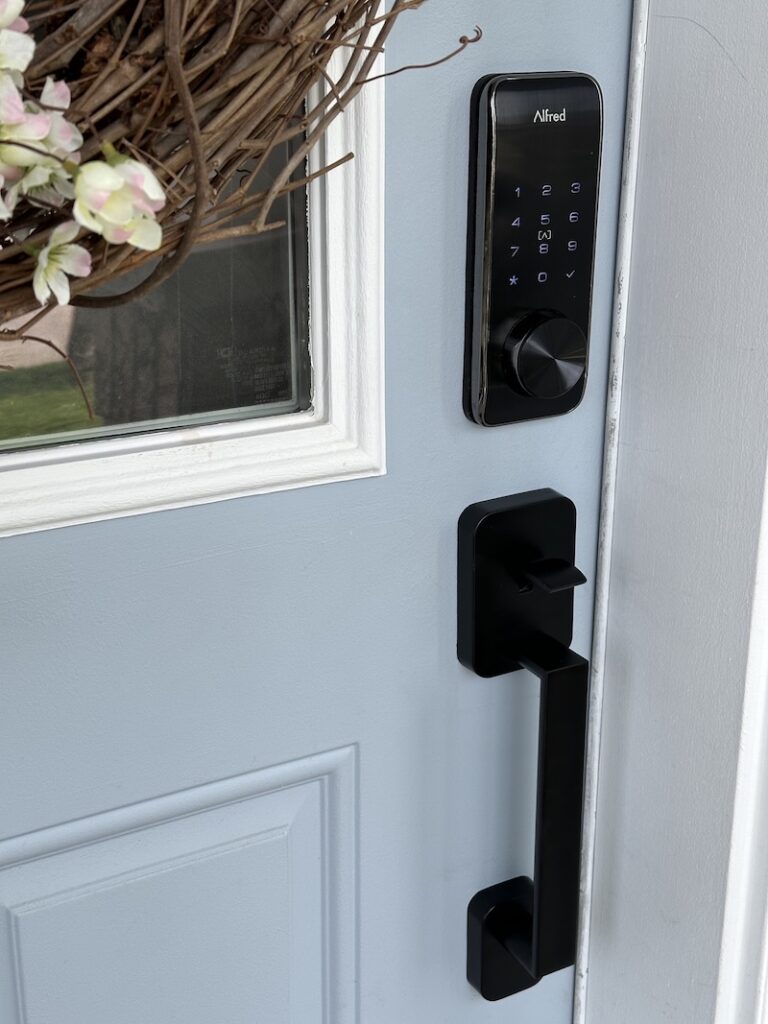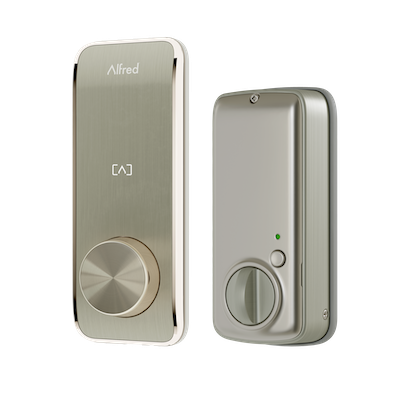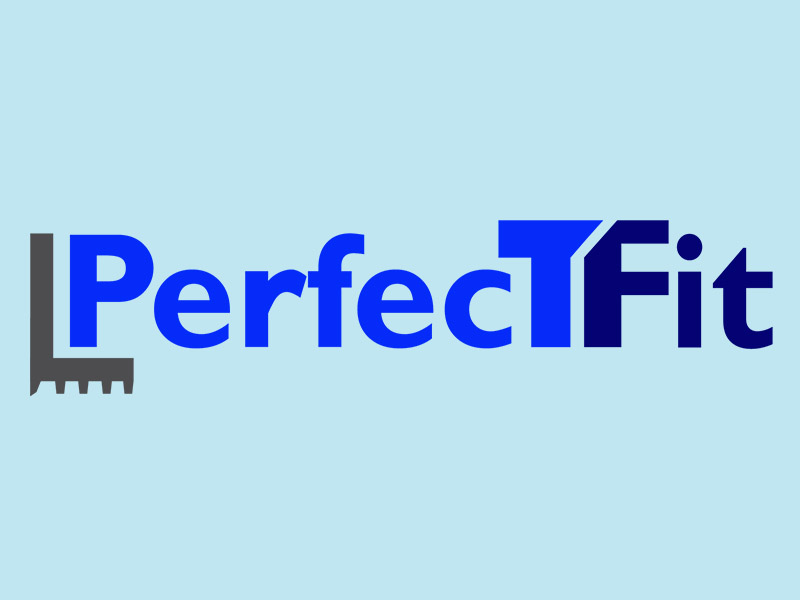There are a number of reasons why smart locks are a good investment for any homeowner. Among the many different benefits, the provide:
- Enhanced Security: Smart locks often come with advanced security features such as encryption, alerts for unauthorized access, and the ability to monitor entry and exit.
- Convenience: They allow keyless entry which enables homeowners to unlock a door using a smartphone app, keypad, or biometric features. This is particularly useful for those who frequently forget keys.
- Remote Access: Homeowners can control and monitor their lock remotely, granting access to guests or service personnel without needing to be home.
- Temporary Access Codes: Homeowners can create temporary access codes for visitors, making it easy to let friends, family, or service providers in without giving them a physical key.
- Integration with Smart Home Systems: Smart locks can integrate with other smart home devices, allowing for automation and enhanced access control.
- Activity Monitoring: Many smart locks provide logs of who enters and exits, helping homeowners keep track of household activity.
- Potential Insurance Benefits: Some insurance companies offer discounts for homes equipped with smart security features, potentially saving homeowners money.
Alfred International is not the first company that people think of when they consider buying a smart lock for their home. However, Alfred International, a Canadian company, was founded in 2018 to address a critical gap in the smart home market by creating products that balance security, convenience, and elegant design.
Alfred’s leadership team brings over 30 years of manufacturing experience, having served as an original equipment manufacturer (OEM) and original design manufacturer (ODM) partner for many major door hardware brands worldwide. Their core philosophy, termed “butler meets bouncer,” emphasizes exceptional convenience while ensuring rigorous security standards. All their products undergo extensive testing to exceed ANSI Grade 1 requirements.
Alfred’s comprehensive product line addresses security needs across residential and commercial applications. Their product line includes:
- DB2S Smart Lock.
- ML2 Smart Mortise Lock
- DB1S Entry-level version of the Alfred smart lock.
- DB1 Pro Smart Deadbolt Lock.
- Interconnect Kit: An industry-first solution that enables any Alfred smart deadbolt to function as a code-compliant interconnect lock with single-motion egress functionality.
This makes it ideal for multi-family and rental properties.
Alfred DB2S Smart Lock
The Alfred DB2S Smart Lock is Alfred’s top of the line motorized deadbolt lock with an illuminated touchscreen.

Features of the DB2S include:
- Multiple Unlocking Options: Keys, RFID Cards (2 cards are included), Personal identification numbers (PINs) – There is storage for 250 PINs, unlimited Bluetooth keys for family or friends, Alfred Mobile App, and One-Touch Access where a person can unlock the lock with a single button press when arriving home and carrying their smart phone with the Alfred app installed.
- Rechargeable Battery: Internal Lithium Ion Battery provides 8-12 months of usage per charge
- Motorized Deadbolt: Made of hardened steel for enhanced security
- App Control: Lock is Bluetooth enabled to connect to the Alfred Home mobile App
- Security: 128-bit encryption, adjustable auto-relocking, and vacation mode which disables operation of the lock through PINs and RFID cards.
- Mobile Alerts: Alerts sent when someone enters your home (requires the optional Connect V2 WIFI Bridge)
- Voice Prompts and Audible Alerts: Prompts can be configured for 5 languages including English, French, Spanish, Portuguese and Mandarin. Prompts are played when, for example, the lock is unlocked to notify the people in the home of the event. Volume of the prompts can be adjusted in the Alfred app.
- Privacy: Privacy mode disables operation of the lock through PINs and RFID cards with the exception of the master PIN. This restricts access to the home by guests, contractors that have been provided a PIN, etc.
- Finish Options: Available in Black or Satin Nickel
- Integration Options: Zigbee 3.0, optional Z-Wave 700 module, and optional Wi-Fi bridge allow the lock to be integrated with Alexa, Control4, Ezlo, Google Home, Homey, Ring, SmartThings, URC, Vera, and other smart home ecosystems.
Hands on with the Alfred DB2S
Physical installation of the lock is one of the easiest I have found. This isn’t because it is fundamentally different than other smart locks I’ve worked with. What makes the Alfred DB2S so easy to install is that Alfred has partnered with BILT to provide the instructions for installation through the BILT app.
The BILT app provides 3D interactive instructions with voice, text, and animated guidance for thousands of products. Each step of the installation of the Alfred DB2S includes animated images with a voice overlay explaining how to perform that specific step in the process. It made the overall installation of the lock very simple.
A couple of interesting points about the physical installation of the lock are:
- In addition to providing installation instructions through the BILT app, Alfred includes a quick start guide, printed installation instructions, and printed lock programming instructions in the box. In contrast, most other manufacturers just include a quick start guide and a QR code for obtaining more detailed instructions online.
- The DB2S includes an optional door sensor. This allows the lock to know if the door is open or closed.
- The DB2S includes an optional third post that reinforces the installation of the lock. This third post installs through an additional hole that must be drilled in the door above the whole where the bolt mechanism is installed. It can help with the installation on doors that are weak or warped. It can also be installed just to provide a stronger, more secure installation.
Once the physical installation is complete, you download the Alfred app using the QR code in the manual, create an account, add your lock to the account, and enter a master PIN. At this point your lock is ready to use. You can also setup the other features of the lock using the app or by following the instructions in the programming guide. The programming guide provides instructions on enabling/disabling features by entering the master code on the lock’s keypad followed by specific key combinations.
A nice feature of the DB2S is Auto Unlock. When enabled, and a user has paired their smart phone with the lock, the user can unlock the lock with a single touch of the keypad when carrying their phone. The only additional requirement for unlocking with a single touch is that the user has left a geofenced area around their home. The requirement to pass beyond the boundary of a geofence is an understandable safety feature. Otherwise, someone could walk up to your door while you are inside your home, press a button on the lock, and unlock your door. However, it is a shame that there isn’t a way to, for example, go out to do some work in your yard and come back into your house by pressing a single button on the keypad.

The Alfred app includes all the features you will need to manage the lock including updating firmware, adding users, assigning PINs to users, managing RFID access cards, etc. However, the paradigm takes a bit getting used to. For example, users and PINs are handled separately in the app. You create a user, separately you create a PIN, finally you associate the PIN with the user. The same paradigm is used with RFID access cards. So, a user could have multiple PINs and multiple RFID cards. This paradigm is very flexible but also take some getting used to.
The ability to unlock a smart lock with a traditional key is a nice feature the DB2S comes with two physical keys and there is a cover over the key slot on the front of the lock that adds to the appearance of the DB2S). While I’ve found that smart locks are very reliable, having a key adds peace of mind that you won’t be locked out of your home because you forgot to charge the lock’s battery or because there was a technical failure with the lock. Personally, all the smart locks I use in my own home include this feature.
The DB2S I evaluated came with the optional Z-Wave module. I was able to pair the lock with my Hubitat Elevation hub. Once paired, not only could the lock be locked/unlocked through the Hubitat but PINs could also be managed. While this adds flexibility, my personal opinion is that PINs should be managed through the Alfred app, not through smart home integration.
I also was able to lock/unlock the DB2S from a Crestron processor that is integrated with the Hubitat Elevation Hub using the Crestron-Hubitat driver that can be downloaded from my GitHub.
One thing to be aware of is that Z-Wave pairing must be done by keying in the master PIN and following the instructions in the programming guide for entering a sequence of additional numbers using the keypad on the lock. Z-Wave pairing cannot be accomplished using the Alfred app.
An option I didn’t get to test, but is worth mentioning, is the Alfred Connect V2 WIFI Bridge. The Connect V2 is a small module that you plug into the outlet closest to your Alfred lock. The Connect V2 then connects to your lock through Bluetooth and bridges it to your Wi-Fi network. It allows you to lock, unlock, add PIN codes, update lock settings, and more using the Alfred app on your smart phone from anywhere you have Internet connectivity. The Connect V2 can be used in parallel with the Z-Wave module. It also allows the lock to be integrated with Google Home and Amazon Alexa so the lock can be controlled using voice commands.
Finally, in a multi-dwelling-unit (MDU) scenario, the Connect V2 can be used to integrate Alfred locks into the building management system (BMS). Users can even integrate an Alfred lock into the smart home ecosystem of their choice while the lock is also integrated into the BMS.
Overall, the Alfred DB2S worked well, is very nice looking, and the construction is very high quality. However, there are some features available on other smart locks that are missing on the Alfred DB2S. One example is a fingerprint scanner. While the DB2S includes many ways for a user to unlock their door, fingerprints are a very convenient way to do it. A second example of a feature I have found useful in other locks is the ability to create a one-time PIN for a contractor. In this case, after the contractor has unlocked your door, the PIN is automatically disabled. One-time-use PINs simply save you the trouble of remembering to delete the PIN after the contractor has done their work. But, if you just want a nice looking, high quality smart lock and don’t need every bell and whistle possible, the Alfred DB2S is a solid contender.








